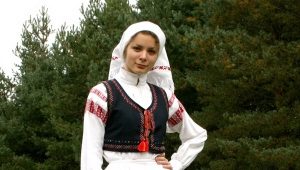Moldovan national costume

A bit of history
The traditional ethnic costume has been formed for centuries, and every detail in it has a special meaning. The folk costume of Moldova reflected, as in a mirror, the peculiarities of the life of the people on this generous land with rich harvests. Clothing with a national pattern of leaves, flowers and fruits, decorated with skillful embroidery, distinguishes the old Moldavian costume.
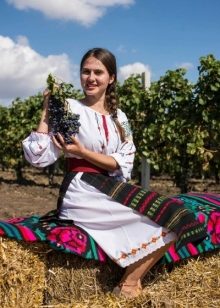

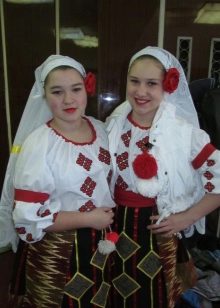
Today, elements and traditions of the costume are also manifested in everyday clothes worn in rural and sometimes even in urban areas. All the richness and beauty of the traditional decoration is especially noticeable during holidays, weddings and festivals of ethnic music and dance in Moldova.
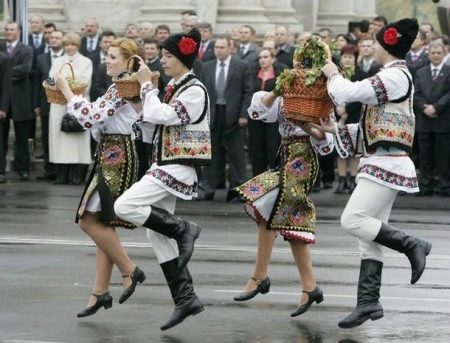
The Moldavian costume originated at a time when peasant women made fabrics for clothes themselves, in conditions of a subsistence economy isolated from cities. In the villages, they wove and spun, girls embroidered shirts, and prepared a dowry for the wedding.
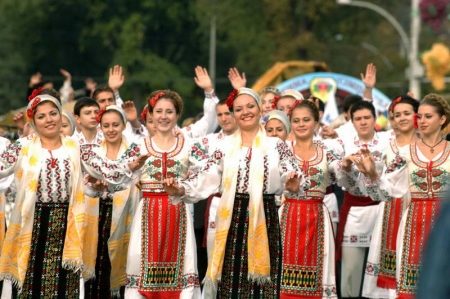
Starting from the 14th century, spinning, weaving workshops and craft workshops were built on the territory of Moldova. Noble local boyars gradually developed the weaving industry. Exquisite factory-made materials, such as silk, satin and cashmere, began to appear and be used for tailoring national costumes only in the 19th century.At the same time, thin aprons made of linen, silk towels with fringe, which married women put on their heads, also came into fashion.


Sheepskin coats and hats made of lamb, felt hats and shoes, as well as sleeveless jackets for men and women were supplied to the villagers by artisans. Thus, an original national costume, characteristic in appearance for all regions of Moldova, was formed.


Peculiarities
Colors and shades
- In the dress of a woman from a Moldovan village, with the exception of holidays, two or three primary colors dominated - black, white and red. For embroidery, these shades were used, as well as blue and green.

- Cotton and woolen fabrics were used for everyday and elegant women's skirts. There were several bright vertical stripes on a dark background. Often there were white-blue or red-green skirts.
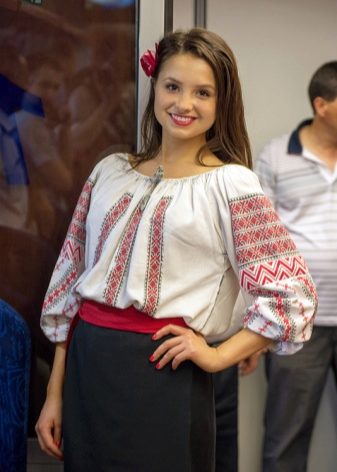
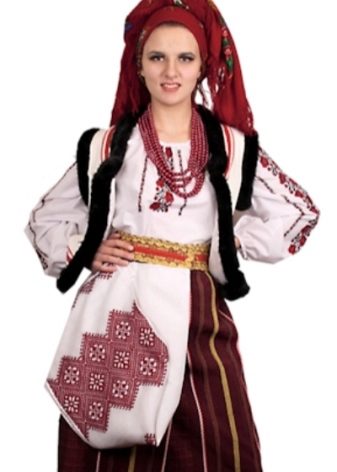
Fabrics and fit
Home-made fabrics, which are still produced by Moldovan craftsmen on ancient horizontal looms, include linen and hemp linen and canvas, as well as thick woolen material.

- Shirts and summer men's pants were sewn from canvas. Wool was used for outerwear, skirts and aprons, as well as wide belts, characteristic of both women's and men's national costumes of Moldavia.
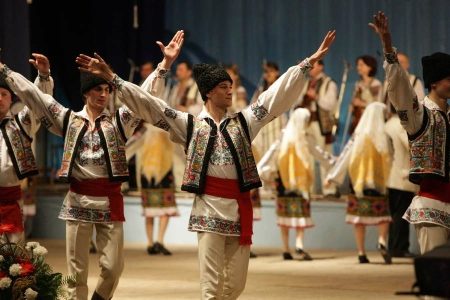
- Depending on the area, the fitted skirt could have a cut, be more straight or flared. An ornament of the style inherent in this particular part of the country. located on the chest, collar and hem.

- The sleeves of the shirts were made loose, the products were sewn like tunics, the sleeves were cut from a single piece of material. They wore more complex styles with inserts on the shoulders, on the yoke. A noticeable part of the shirt was cut from a thin linen, and the lower part, if it was not visible, from a coarser one.
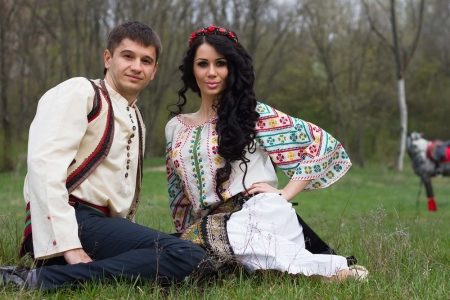
- They embroidered national shirts with a cross stitch and satin stitch in three or four stripes, decorated with beautiful hemstitches.



Kinds
The national costume for a Moldavian man, which is found in any corner of this country, is an elongated white tunic shirt, light trousers, a pointed lamb hat or hat.

Kosovorotka is the oldest type of shirt for men. It is worn loose, adorned with one or more belts of wool or leather.

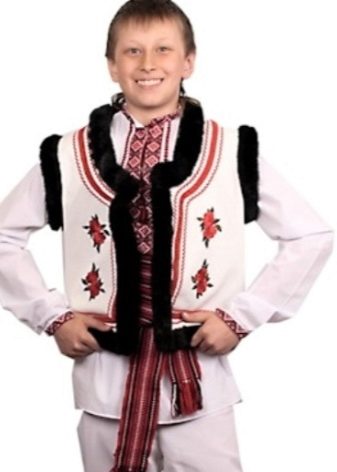
The men's suit is not as full of colors as the women's. Residents of mountain villages have long worn shirts made of thick linen with extended sleeves and long floors. On the plain, the men's national costume included a short shirt with tight-fitting sleeves.
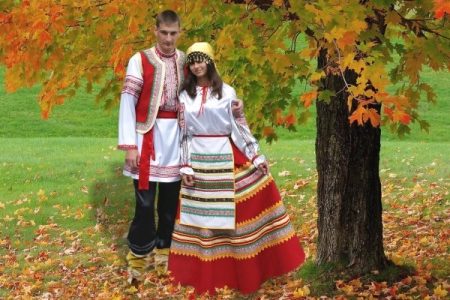
Men wore trousers in summer from hemp or linen, in winter - from wool. Shepherds in the mountains wore skins. As outerwear, they were vests with leather applications, long-brimmed raincoats made of light-colored cloth - white and gray. Peasants wore fur coats and scrolls in winter. Also, men did not leave the house without a hat or summer straw hat.
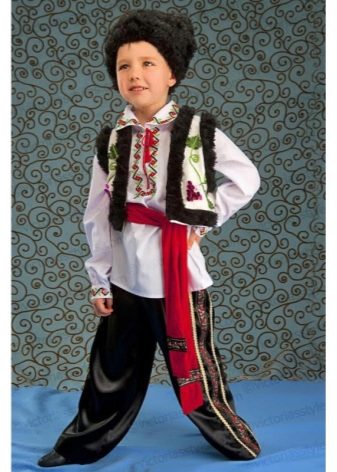
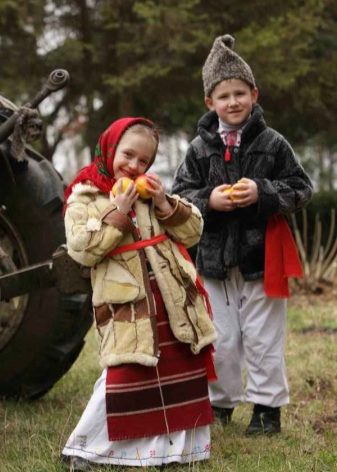
Women were supposed to wear an elegant white long shirt with an ornament, a woolen skirt with a belt. The most popular was the skirt called "katrince". A piece of material wrapped around the hips was supported by a belt. At the same time, it did not matter which side to start laying the floors of the skirt. The belt showed the age of a married woman, young girls often tied a scarf around their waist.
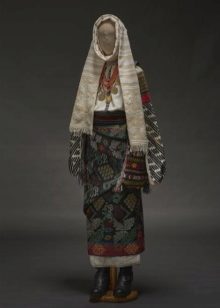
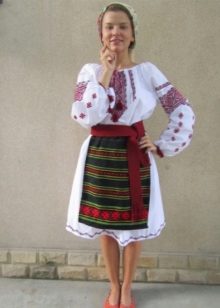

Accessories and shoes
- Moldavian women wore headscarves in summer and autumn, and in winter they wore hats like men's, with a top made of fabric and fur trim, hats made of flat fur with headphones.

- Peasants put on shoes in home-made postols made of rawhide.A processed piece of animal skin, worn on the leg, was pulled together at the top. Custom-made shoes were highly valued and passed down from mother to daughter.
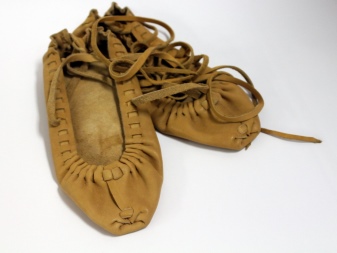
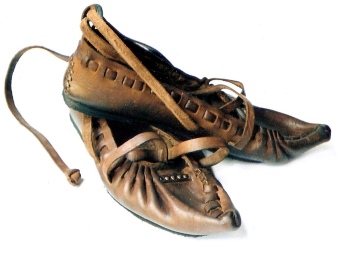
- Men and women in the villages wove shoes from reeds and linden bark, tying the plants with ropes like bast shoes. Later, leather shoes and boots appeared. Shoes made of felt or wool were felted or knitted for the elderly and children.

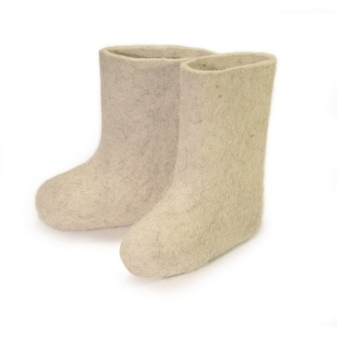
The luxury of a wedding dress
Unmarried Moldovan girls walked with their hair loose or braided, wove and wore wreaths of plants and flowers. During the wedding ceremony, the bride's head was covered with a transparent veil. At the wedding celebration, she was publicly dressed in a dress for a married woman - a scarf.
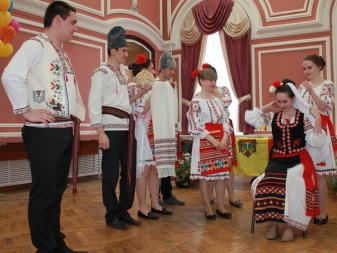

A festive scarf made of silk or fine cotton yarn, folded in a triangle, was worn so that both ends, beautifully embroidered with patterns, fell on the chest. The outfit was decorated with beads and necklaces, beautiful earrings.
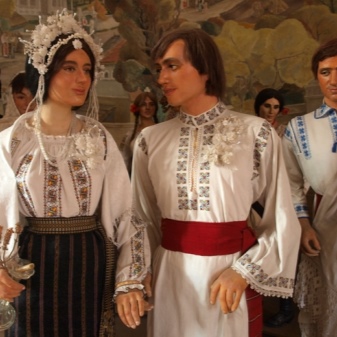

Since ancient times, Moldovans have believed that a special belt can cure diseases, make people happy and lucky. The young man was given a special belt for the wedding, over which a conspiracy was read. This ritual has been preserved in Moldovan villages to the present day. Belts made of leather with metal inserts were replaced by wide woolen ones, the length of which was sometimes up to two meters.
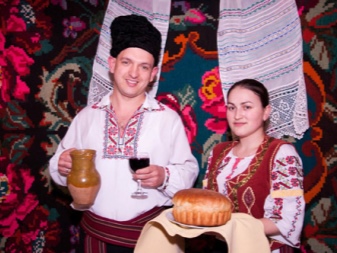

Young boys and girls wore wedding clothes with rich embroidery on the collar, skirts and cuffs, to which lace was sewn. For wedding dresses, they used a special fabric made by weaving patterns. Wedding trousers for guys were made of cotton snow-white linen with embroidered national Moldavian ornament. The groom put on a beautiful hat with ribbons, decorated with flowers and a peacock feather.























